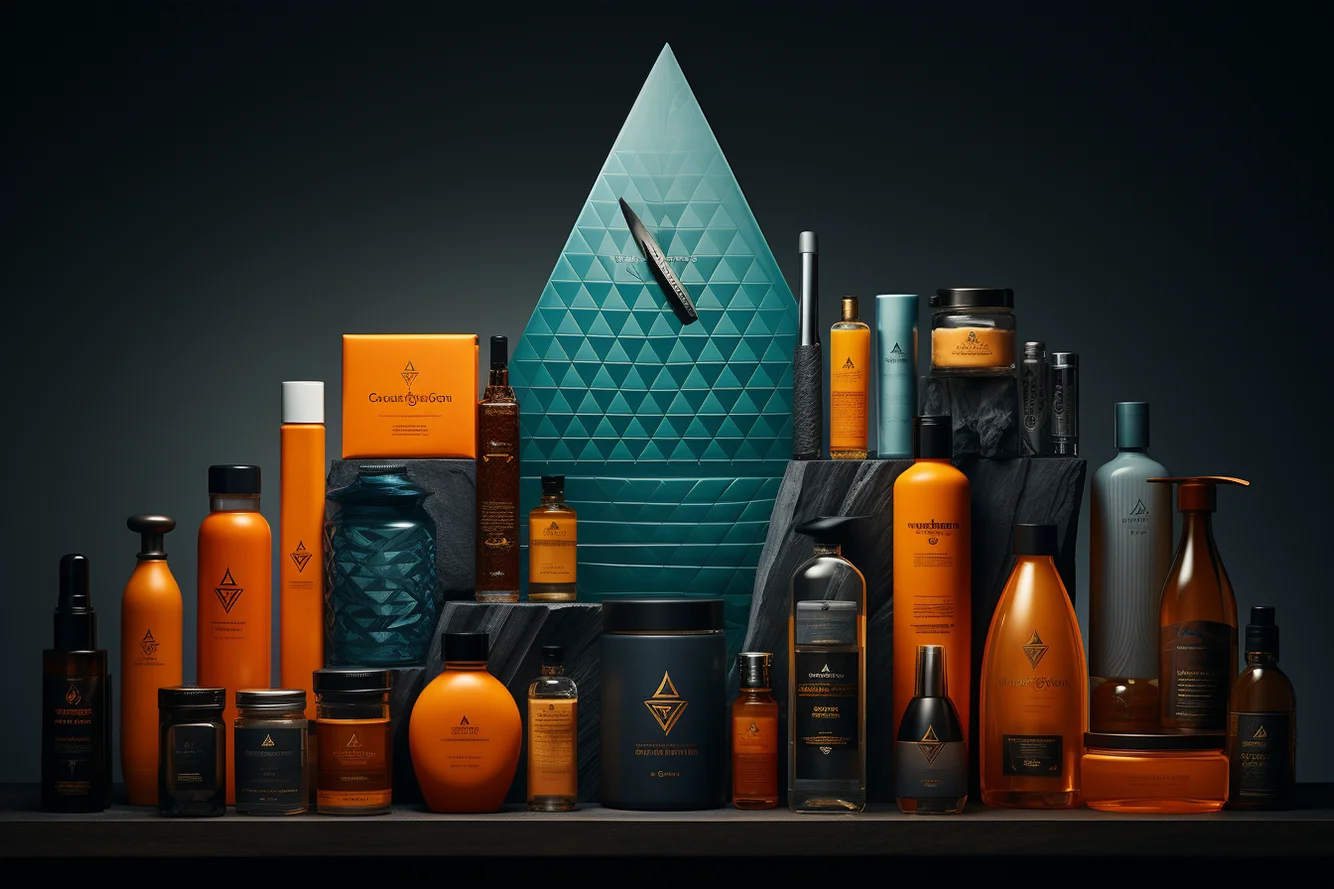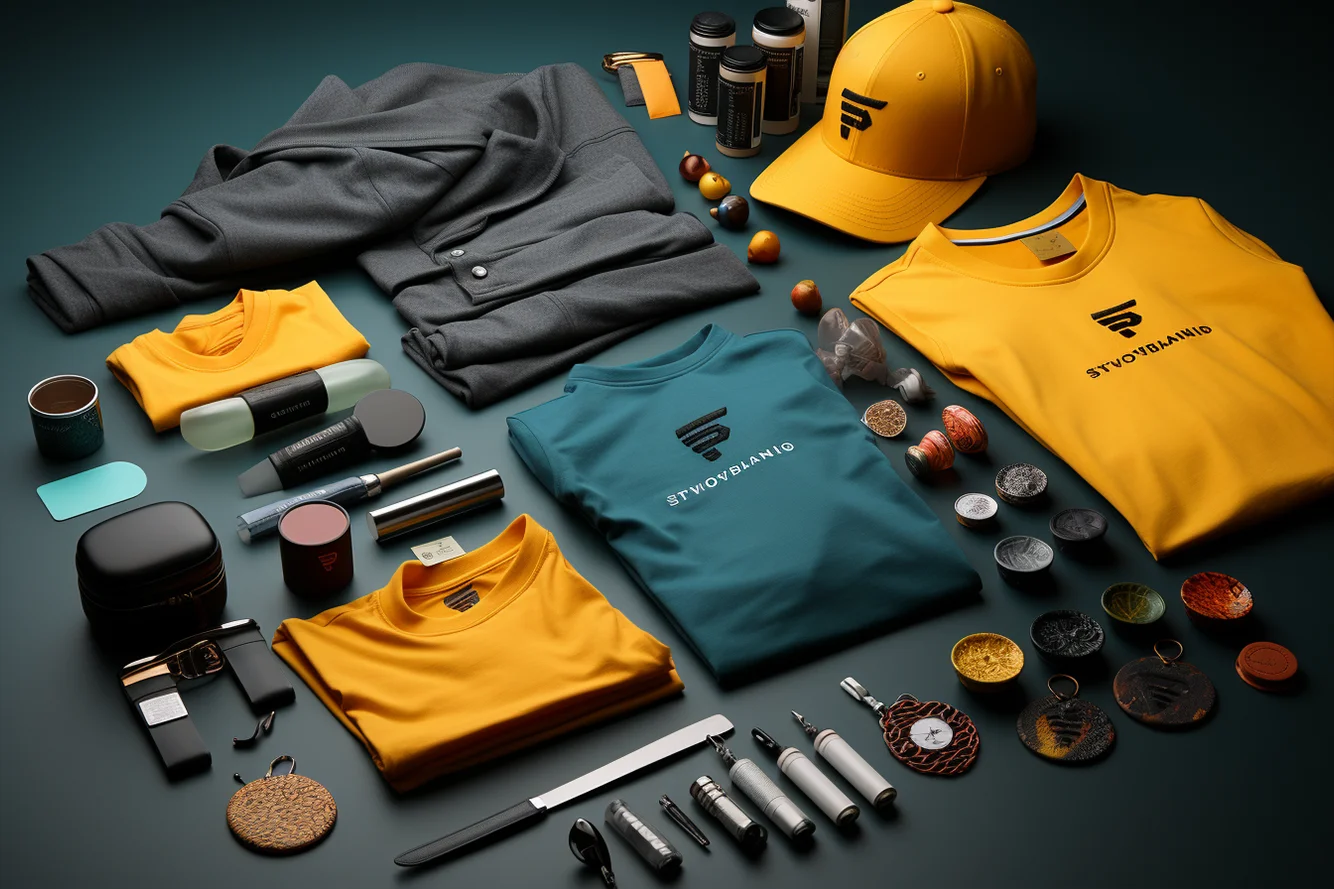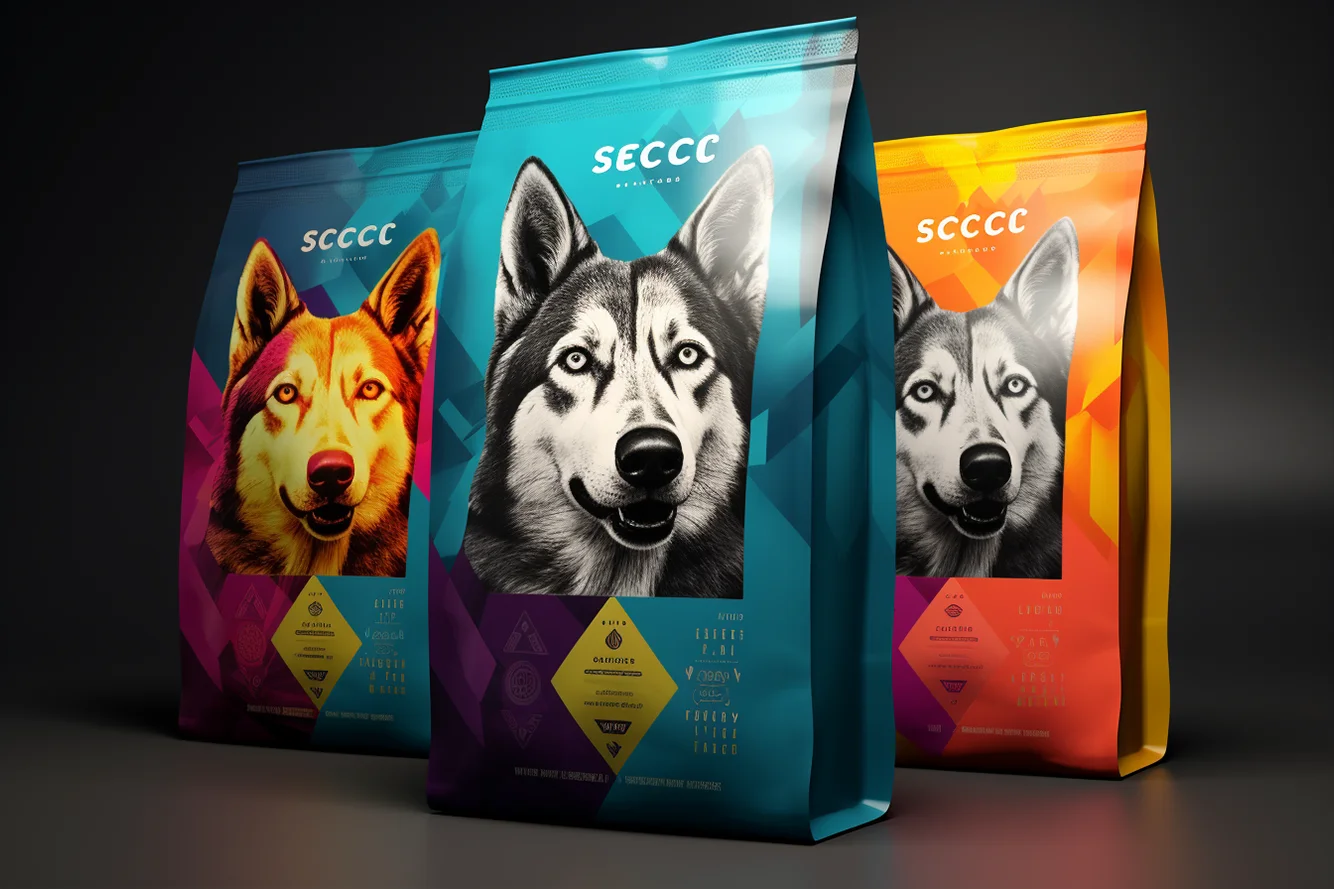Introduction to Brand Design and Attraction
One cannot stress the importance of brand design in the context of customer engagement. It serves as the silent spokesman for your company, using images to evoke feelings and ideas before a word is said or a product is touched. This first section of “The Science of Attraction: Why Certain Brand Designs Captivate Us” explores the fundamentals of brand design and how important it is for drawing in customers.

Understanding Brand Design
There is more to brand design than just a catchy color scheme or memorable logo. To convey a brand’s essence, a comprehensive system that incorporates packaging, typography, color schemes, logos, and overall aesthetics is used. Together, all the components form a powerful first impression that has the power to draw in or turn away potential clients. The subtleties of brand design are similar to the craft of storytelling in that each hue, shape, and line can elicit feelings and send a message.
Significance of Attraction in Brand Design
It is impossible to exaggerate the importance of attractiveness in brand design. Making a lasting impression and standing out is crucial at a time when customers are inundated with companies competing for their attention. It takes more than just beauty to captivate an audience; it takes connecting with them on an emotional level. This relationship may increase consumer loyalty, promote brand awareness, and eventually propel business success. Companies who are adept at attracting consumers not only draw in the sight but also the heart and mind, making their goods desired rather than merely noticed.
Learn how to revitalize your brand’s aesthetics:
Let’s solve the riddles around the reasons why some brand designs are so appealing. You will get to know the neural and psychological foundations of attraction, investigating how and why specific visual cues cause our brains to react in a particular way. Through a grasp of the physics underlying these occurrences, businesses can create designs that resonate strongly with their target audience in addition to being aesthetically pleasing.
As the investigation into brand design progresses, several aspects are carefully looked at, such as the importance of typography and images as well as the psychology of colors and forms. This analysis goes beyond simple academic discussion to become a useful manual for companies hoping to use design to further their marketing goals. The goal is to uncover the mysteries of designing brand designs that are not only aesthetically pleasing but also psychologically captivating via the painstaking combination of art and science.

The Psychology Behind Attraction in Brand Design
-
The Psychology of Colour
A key component of brand design, color can elicit particular feelings and responses in viewers in a matter of milliseconds. Although the psychology of color is based on individual and cultural experiences, there are some universal connections as well. For example, blue is a preferred color for financial organizations because it frequently reflects stability and trust, but green is a preferred color for wellness companies since it represents calm and health. Knowing these connections enables marketers to deliberately choose color schemes that appeal to the emotions of their target audience and convey their intended message, increasing attraction and retention.
Know the psychology behind using different colors in branding:
-
Typography and Perception
The way typefaces are presented and used in typography has a subtle but important impact on how people perceive a brand. Every font type has its own personality and meaning; sans-serif fonts are viewed as contemporary and tidy, whereas serif fonts are thought to be conventional and trustworthy. The way typography works with other design components may have a big impact on how people understand what’s being said. Businesses may control perceptions and make their business seem more approachable, authoritative, or inventive by carefully choosing typefaces that complement their brand identity.
Discover the use of the right font in branding:

-
Imagery and Emotional Bonding
Graphics and images are powerful instruments for communicating stories and evoking strong feelings. When combined with effective images, writing alone may effectively communicate complicated ideas and elicit a strong emotional reaction. Since customers are more likely to remember and feel favorably about companies that arouse sentiments of enjoyment, nostalgia, or aspiration, this emotional resonance is essential for brand appeal. A sense of familiarity and trust is created between customers and brands via the effective use of imagery in brand design, which draws on common human experiences and emotions.
-
The Halo Effect
The cognitive bias known as the “halo effect” occurs when an individual’s perception in one domain influences their view in another. When it comes to brand design, a well-made, eye-catching visual identity may encourage favorable perceptions about the company’s dependability, value, and quality. This effect emphasizes how crucial it is to have a unified and appealing design approach since first impressions have a big influence on how people perceive a brand over time and how loyal they are.
The integration of these psychological concepts into brand design aims to establish a link that feels right, not merely something that looks beautiful. Brands who are skilled at this craft can express their beliefs, elicit the appropriate feelings, and highlight their USP without using words. With its subtle psychological undertones, this design language can draw in, hold the attention of, and win over new clients into devoted supporters.
We’ll learn how our brains interpret visual cues and why some designs captivate not just our attention but also our emotions. Brands may create designs that are both aesthetically pleasing and profoundly meaningful by bridging the gap between art and science. This creates a strong bond with the audience that endures over time.

The Role of Neuroscience in Understanding Brand Attraction
The relationship between consumer attraction and brand design is not limited to psychology; it also involves the complex field of neurobiology. The cerebral foundations of what makes certain pictures more engaging than others are revealed by this investigation into how our brains interpret and analyze brand designs.
-
Neuroaesthetics in Brand Design
The study of how aesthetic experiences affect brain activity is known as neuroaesthetics, a topic that sits at the nexus of neuroscience and art. It investigates how specific visual components might pique the brain’s attention and pleasure in the context of brand design. The brain’s reward centers, for instance, can be stimulated by designs that use symmetrical compositions, harmonious color schemes, and unusual yet recognizable forms. This neurological reaction makes the brand more memorable and appealing to the customer by attracting attention and improving its overall attractiveness.
-
Processing Images and Identifying Brands
Because of the efficient way in which our brains receive visual information, simplicity and clarity are preferred. This has important ramifications for brand design since instantly recognizable logos and images have a competitive edge. The idea of “processing fluency” helps to explain why unique and straightforward designs frequently work better since they take less mental work to comprehend and recall. By using this approach to create distinctive and unambiguous designs, brands may stand out more in the crowded market.
-
Memory and Logo Design
Brand design has a significant effect on memory retention. Remarkable brand images are stored in our long-term memory, where they may have an impact on our decisions to buy in the future. Its memorable qualities are enhanced by distinctive color schemes, creative logos, and a unified visual identity across all touchpoints. According to neuroscience research, a brand’s design that is both recognizable and unique can improve brand recall, increasing the likelihood that customers would remember and select the brand when faced with a choice.

Case Studies
Numerous companies have effectively incorporated these neurobiological concepts into their design approaches. In addition to reflecting its corporate identity, Apple’s use of basic color schemes, crisp lines, and minimalist aesthetics maximizes visual processing fluency, making its devices easily recognizable. Coca-Cola is another example of a company that uses unique typography and a consistent color scheme to improve brand recall. These businesses are good examples of how design decisions that are emotionally felt by customers may be made with an awareness of the neuroscientific foundation of attraction.
Read the journey of Coca-Cola:
We can better comprehend the intricate dynamics of customer attraction thanks to the combination of neuroscience and brand design. Brands are able to create designs that appeal to the head and heart in addition to the sight by understanding how our brains react to visual stimuli. As we get more insight into these ideas, the possibilities for developing genuinely appealing brand designs are virtually endless.

Practical Application and Future Trends
After examining the psychological and neurological underpinnings of the appeal of brand design, we now shift our attention to the real-world implementation of these discoveries and the developing trends that will influence the direction of brand design.
Science’s Role in Brand Design Strategy
In order to utilize the science of attraction in brand design, companies should take into account the following recommendations:
- Apply Colour Psychology: Select color palettes that elicit the appropriate feelings in your target market in addition to being consistent with your brand identity. Knowing how colors affect people psychologically might improve how consumers perceive brands and affect their purchasing decisions.
Explore the color theory tips for your brand:
- Place a Strong emphasis on Simplicity and Clarity: Create instantly recognizable and memorable logos and images. You may improve processing fluency and lower cognitive load to make your brand more palatable and approachable to customers.
- Establish Emotional Resonance: Make use of fonts and visuals that appeal to your audience’s emotions. Strong emotional ties may greatly increase memory and brand loyalty.
- Test and Iterate: To determine how customers react to various design aspects, use neuroimaging methods and A/B testing. With the use of data, designs may be improved to better suit customer preferences and increase appeal.
Assessing the Design’s Effectiveness
Sales data analysis, brand memory surveys, and customer feedback are just a few ways to gauge how successful a brand design is. Technological advancements also make it possible to conduct more complex analyses, such as eye-tracking studies and functional magnetic resonance imaging (fMRI), to determine the emotions evoked and how customers visually engage with a brand. These observations can offer insightful criticism for improving brand designs.

Future Trends in Brand Design
The following major trends are probably going to influence brand design in the future:
- Customization and Personalisation: As technology develops, businesses will have more chances to use their design to craft individualized experiences by adjusting images and messaging to suit certain tastes and actions.
- Augmented Reality (AR) and Virtual Reality (VR): Virtual reality (VR) and augmented reality (AR) will provide marketers with new methods to communicate with customers by enabling immersive experiences that have the potential to revolutionize brand attraction and interaction.

- Design for Sustainability: As consumers’ understanding and concern for environmental concerns rise, so too will the importance of sustainable design techniques. An audience that is more environmentally concerned is likely to be drawn to brands that integrate eco-friendly materials and processes into their design approach.
- Neurodesign: The use of neuroscience in design will advance, providing a more in-depth understanding of customer preferences and empowering companies to produce more impactful and emotionally appealing products.
In order to develop images that capture and resonate with customers, the interesting subject of brand design known as the “science of attraction” combines psychology, neurology, and art. Through a grasp of the fundamental mechanics influencing perception and choice, businesses are able to create designs that are both distinctive and establish meaningful relationships with their target audience.

Future brand design innovation will undoubtedly come from the nexus of consumer psychology, sustainability, and technology. Brands that can keep up with the latest trends and consistently modify their design strategies by using scientific insights will have the greatest chance of succeeding in the cutthroat industry.
In conclusion, developing compelling brand designs is a combination of science and art. In the always-changing field of brand design, companies may improve their visual identity, establish stronger connections with customers, and find long-term success by adopting the concepts discussed in this series.



